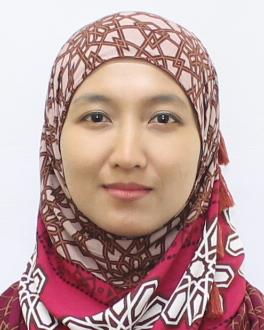Clinical Orthodontic Diagnosis Made Easy
Master diagnosis. Skip the fluff. Focus on what really matters.
Synopsis
"Learn what matters, diagnose what counts." Clinical Orthodontic Diagnosis Made Easy is a patient-centred micro course designed to transform the way learners approach orthodontic diagnosis. Unlike traditional textbook-heavy modules, this course takes a hands-on, visual, and case-based approach to help dental professionals and students develop sharp diagnostic instincts quickly and confidently. Through a series of micro modules, learners will learn how to evaluate facial patterns, identify malocclusions in three planes of space, interpret essential cephalometric findings, and connect diagnostic clues to practical treatment directions. Each module is packed with real clinical cases, interactive tools, and actionable tips that reflect how experienced orthodontists think in the clinic. Whether you're a student seeking clarity or a general practitioner aiming to improve orthodontic referrals, this course will help you diagnose smarter, not harder.
Objective
By the end of this course, learners will be able to:
-
Describe a structured clinical approach to orthodontic diagnosis that emphasises patient-centred thinking.
-
Differentiate facial types and soft tissue patterns through basic frontal and profile analysis.
-
Classify malocclusions accurately in the sagittal, vertical, and transverse planes based on clinical and photographic evaluation.
-
Interpret essential cephalometric landmarks and angular measurements to support clinical findings.
-
Identify red flags and atypical clinical signs that may indicate complex, syndromic, or referral-worthy cases.
-
Integrate clinical and radiographic findings to formulate preliminary treatment considerations.
-
Evaluate diagnostic decision-making through reflection on case-based errors and best practices.
Learning Outcome
These learning outcomes aim to enhance your clinical skills and decision-making abilities, encouraging you to think critically and apply the knowledge directly to patient care.
Topic 1: The Diagnostic Mindset – Think Like an Expert
Learning Outcomes:
- Describe the systematic approach orthodontists use during diagnosis.
- Understand the importance of pattern recognition and critical thinking.
- Identify the key components of an orthodontic clinical problem.
- Shift from a “tooth-level” to a “facial and functional” level of thinking.
Topic 2: The Power of the Face – Facial Analysis First
Learning Outcomes:
-
Accurately identify skeletal discrepancies from facial features.
-
Integrate facial soft tissue assessments with skeletal pattern recognition.
-
Develop a systematic approach for evaluating facial proportions (e.g., FMA, Nasion-A point).
Topic 3: Classify in a Flash – Sagittal, Vertical, Transverse
Learning Outcomes:
-
Master the skill of quickly identifying key occlusal features and matching them to classifications.
-
Utilize diagnostic tools for early detection of malocclusion and planning interventions.
-
Establish the connection between functional occlusion and skeletal/soft tissue relationships.
Topic 4: The Ceph Cheat Sheet – Minimalist Cephalometrics
Learning Outcomes:
-
Identify and measure key cephalometric landmarks to assess skeletal relationships.
-
Evaluate the need for cephalometrics in specific cases, avoiding unnecessary radiographs.
-
Develop a simplified approach to interpreting cephalometric analysis results in clinical practice.
Topic 5: Red Flags – When to Reconsider and Refer?
Learning Outcomes:
-
Detect clinical signs that suggest systemic conditions or developmental disorders.
-
Understand the importance of timely referral to specialists for complex or rare cases.
-
Distinguish between routine orthodontic issues and those requiring interdisciplinary collaboration.
Topic 6: Diagnosis to Plan – Connecting the Dots
Learning Outcomes:
-
Formulate a differential diagnosis by synthesizing clinical examination, radiographs, and patient history.
-
Prioritize treatment options based on diagnosis, patient needs, and long-term outcomes.
-
Refine treatment planning by integrating digital tools and emerging technologies in orthodontics.
Topic 7: Diagnostic Sim Lab
Learning Outcomes:
-
Apply a critical thinking approach to complex cases by reviewing multiple perspectives on diagnosis.
-
Utilize AI tools to evaluate diagnostic accuracy and refine clinical decision-making skills.
-
Strengthen diagnostic confidence through real-time application and feedback from peers/experts.
